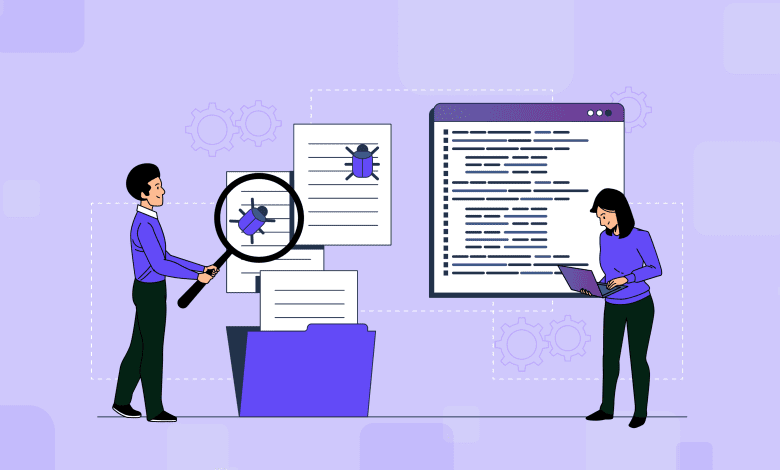Choosing the Right Web Application Testing Company

In today’s digital landscape, web applications have become a cornerstone of business operations, enabling seamless interactions with customers, clients, and partners. However, the complexity of these applications brings forth a multitude of challenges, including ensuring functionality, security, and a positive user experience. This is where web application testing steps in as a crucial process that can make or break the success of your digital initiatives.
The Importance of Web Application Testing
Web application testing involves a series of systematic evaluations to identify potential flaws, bugs, vulnerabilities, and performance bottlenecks within the application. Testing is not merely a formality; it’s a strategic approach to ensure that your application functions as intended, provides a secure environment for data, delivers optimal performance under varying conditions, and offers a delightful user experience.
Challenges in Web Application Testing
While the concept of testing seems straightforward, the reality is often complex. With the ever-evolving technology landscape, diverse user devices, and the constant threat of cyberattacks, the challenges of web application testing are manifold. Without a comprehensive testing strategy, your application might suffer from performance issues, security breaches, and usability pitfalls that could harm your brand’s reputation and bottom line
Role of Specialized Testing Companies
In the face of these challenges, businesses are increasingly turning to specialized web application testing company to ensure their applications meet the highest standards of quality and security. These companies are equipped with the expertise, experience, and resources needed to conduct thorough testing across various dimensions. They bring a wealth of knowledge, best practices, and cutting-edge tools to the table, allowing your development team to focus on what they do best: innovation and coding.
Chapter 1: Understanding Web Application Testing
Web application testing is a multifaceted process that involves various types of assessments to ensure a well-rounded evaluation of your application’s performance and capabilities.
Types of Web Application Testing
Functional Testing: This verifies that each function of your application works as intended, from simple interactions to complex processes.
Security Testing: Ensures that your application is fortified against potential vulnerabilities, hacking attempts, and data breaches.
Performance Testing: Evaluate how your application behaves under different conditions, ensuring it can handle high traffic and maintain responsiveness.
Usability Testing: Focuses on the user experience, assessing how intuitive and user-friendly your application is.
Compatibility Testing: Checks how well your application functions across different browsers, devices, and operating systems.
The Risk of Skipping Testing
Failing to invest in proper testing can result in dire consequences. A bug-ridden application might lead to frustrated users, security breaches, legal issues, and substantial financial losses. Investing in testing upfront can save you from the costs and reputational damage that arise from addressing issues after the application has gone live.
Chapter 2: Benefits of Outsourcing Web Application Testing
Cost-Effectiveness
Outsourcing web application testing can lead to cost savings in the long run. Setting up an in-house testing team involves hiring, training, and maintaining staff, along with investing in testing tools and infrastructure. Outsourcing eliminates these overhead costs, allowing you to pay for testing services as needed.
Access to Expertise
Web application testing companies specialize in their field, meaning they have a deep understanding of the latest testing methodologies, tools, and best practices. They bring a wealth of experience from working with various industries, enabling them to provide valuable insights and recommendations.
Faster Time-to-Market
Collaborating with a testing company can accelerate your application’s time-to-market. Their dedicated resources and streamlined processes allow for quicker testing cycles, ensuring that your application reaches users sooner while maintaining high quality.
Focus on Core Competencies
By outsourcing testing, your development team can dedicate more time and effort to what they excel at: developing innovative features and functionalities. This division of labor ensures that each team can work at maximum efficiency, ultimately contributing to a more successful application launch.
Chapter 3: Selecting the Right Web Application Testing Company
Choosing the right web application testing company is a pivotal decision that can significantly impact the success of your project. Let’s explore the essential considerations for making an informed choice.
3.1 Evaluation Criteria
Expertise and Experience
When evaluating a testing company, assess its expertise in web application testing. Look into their experience with similar projects and industries. A company with a proven track record is more likely to deliver high-quality results.
Testing Methodologies and Tools
Inquire about the testing methodologies and tools the company uses. Ensure they are up-to-date with industry standards and equipped to handle the specific requirements of your application.
Industry Knowledge
A testing company that understands the nuances of your industry can provide more targeted testing. Their familiarity with industry-specific challenges and regulations ensures a comprehensive evaluation.
Client Testimonials and Case Studies
Review client testimonials and case studies to gain insights into the company’s performance. Positive feedback and successful case studies indicate a reliable and capable partner.
3.2 Services Offered
Functional Testing
Functional testing ensures that your application’s features, interactions, and workflows perform as intended. This type of testing helps catch critical bugs and usability issues.
Security Testing
Security testing is paramount to protect your application and users from cyber threats. Look for a testing company that employs ethical hacking techniques to identify vulnerabilities and recommend security enhancements.
Performance Testing
Performance testing assesses how well your application handles different loads and scenarios. This testing is crucial to ensure optimal user experiences, especially during peak usage.
Usability Testing
Usability testing focuses on the user’s perspective, ensuring your application is intuitive and user-friendly. A testing company that prioritizes usability testing can help you create a positive user experience.
Compatibility Testing
Compatibility testing confirms that your application functions across various devices, browsers, and platforms. This testing is essential to reach a broader audience.
3.3 Communication and Collaboration
Open Lines of Communication
Effective communication is the cornerstone of successful collaboration. Ensure that the testing company maintains transparent and open channels for regular updates, discussions, and issue resolution.
Collaboration Tools and Processes
Discuss how the testing company plans to involve your team throughout the testing cycle. Collaboration tools and well-defined processes should facilitate seamless teamwork between your development team and the testing experts.
Transparency
A trustworthy testing company will provide transparency into the testing process, progress, and any challenges encountered. Transparency fosters trust and ensures alignment between both teams.
Stay tuned for the next part of this guide, where we will explore real-world case studies of businesses that have successfully outsourced their web application testing.
Chapter 5: Steps in Collaborative Web Application Testing
Initial Consultation and Project Scoping
The process begins with a detailed discussion between your team and the testing company. Define testing goals, requirements, and expectations to establish a clear project scope.
Test Planning
Collaboratively develop a testing strategy that outlines the testing types, methodologies, and timelines. A well-structured plan sets the foundation for a successful testing cycle.
Test Execution
The testing company carries out various testing activities as per the plan. They meticulously examine your application’s functionality, security, performance, usability, and compatibility.
Bug Tracking and Reporting
Identified issues are tracked, documented, and categorized based on severity. Regular reporting keeps your team informed about the testing progress and outcomes.
Iterative Testing
After addressing identified issues, iterative testing ensures that fixes are effective and new problems have not arisen.
Final Reporting
The testing company provides a comprehensive report detailing the testing process, findings, and recommendations. This report serves as a valuable resource for further improvements.
Chapter 6: Making the Most of Web Application Testing Partnership
Continuous Improvement
Embrace a culture of continuous improvement by learning from each testing cycle. Apply insights gained to enhance future projects and avoid repeating similar mistakes.
Long-Term Relationship Building
Nurture a lasting partnership with the testing company. A consistent testing partner becomes intimately familiar with your application’s intricacies and can provide tailored solutions.
Leveraging Feedback
Use feedback from testing cycles to not only address issues but also enhance your application’s overall quality. Feedback-driven improvements can positively impact user satisfaction and business success.
Conclusion
The journey of selecting a web application testing company, collaborating effectively, and reaping the rewards of a thoroughly tested application is both exciting and essential. By understanding the nuances of web application testing and making informed decisions, you’re poised to deliver web applications that stand out for their functionality, security, performance, usability, and compatibility. In an ever-evolving digital landscape, partnering with a specialized testing company is a strategic move that ensures your applications meet the highest standards and exceed user expectations.
Q1: What is web application testing, and why is it important?
A1: Web application testing involves evaluating the functionality, security, performance, usability, and compatibility of a web application before its release. It ensures that the application functions correctly, is secure, delivers optimal performance, and provides a positive user experience. Testing is crucial to identify and fix issues before they reach users.
Q2: Why should I consider outsourcing web application testing?
A2: Outsourcing web application testing offers several benefits, including cost-effectiveness, access to specialized expertise, quicker time-to-market, and the ability to focus your in-house team on core development tasks. Specialized testing companies have the resources and skills to comprehensively test your application across various dimensions.
Q3: How do I choose the right web application testing company?
A3: When selecting a testing company, consider their expertise, experience, testing methodologies, tools, and industry knowledge. Check client testimonials and case studies to assess their track record. Communication and collaboration are also crucial factors to ensure a smooth partnership.
Q4: What types of testing services do web application testing companies offer?
A4: Web application testing companies offer a range of services, including:
- Functional testing: Ensuring all features work as intended.
- Security testing: Identifying vulnerabilities and ensuring data protection.
- Performance testing: Evaluating responsiveness and scalability.
- Usability testing: Assessing user-friendliness and experience.
- Compatibility testing: Checking cross-device and cross-browser functionality.
Q5: How involved will my team be in the testing process?
A5: The level of involvement can vary based on the testing company and your preferences. A good testing company will maintain open communication, involve your team in test planning and execution, and provide regular progress updates. Collaboration tools and processes will be established for effective teamwork.
Q6: Can you provide examples of successful outsourcing cases?
A6: Absolutely. Our case studies highlight businesses that have benefited from outsourcing web application testing. These examples showcase the challenges faced, solutions implemented by the testing company, and the positive results achieved through effective testing.
Q7: What are the steps involved in collaborative web application testing?
A7: Collaborative web application testing includes:
Initial consultation and project scoping.
- Test planning: Creating a comprehensive testing strategy.
- Test execution: Carrying out different types of testing as per the plan.
- Bug tracking and reporting: Managing and documenting identified issues.
- Iterative testing: Retesting after fixes and incorporating feedback.
- Final reporting: Providing a detailed report of testing outcomes.
Q8: How can I make the most of the partnership with a testing company?
A8: Continuously learn from testing cycles and apply insights to future projects. Foster a long-term relationship with the testing company for ongoing collaborations. Leverage feedback from testing to enhance your product’s overall quality.
READ ALSO:- Top 5 Reasons to Create a Crypto Token for Your Business






